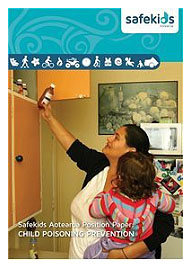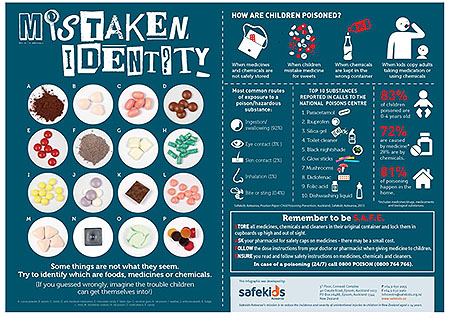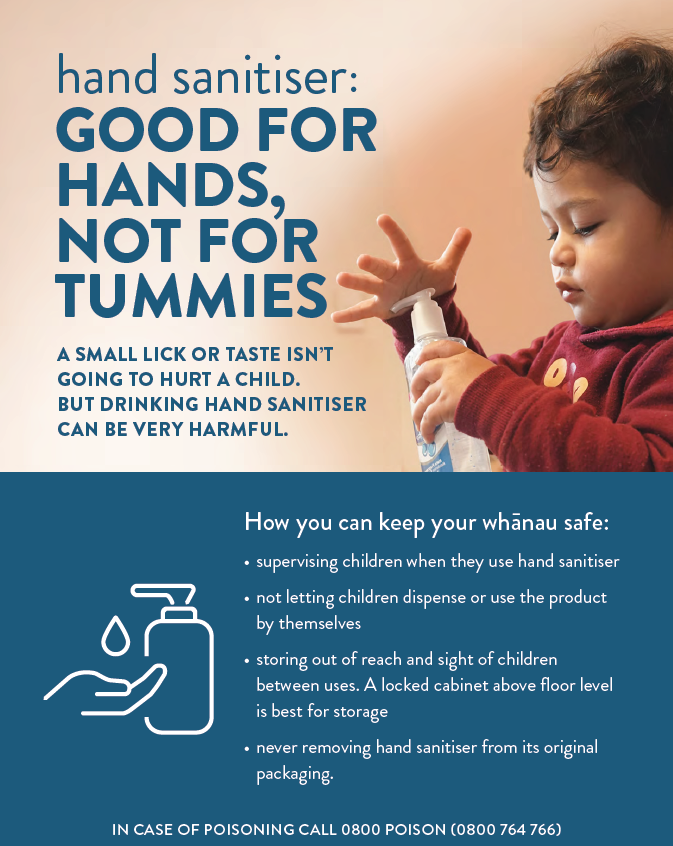Poisoning
Poisons reference card [2020]
Download Poisons reference cardSources

Child poisoning prevention
[Position paper, 2015]
This A4 size 29 page position paper for injury prevention practitioners and policymakers looks at evidence from New Zealand and international research. Children are naturally inquisitive, and learning by exploring their environment is an integral and important part of a child’s growth and development.
They are uniquely vulnerable in their potential to experience unintentional poisoning, due to their changing developmental skills, and their bodies’ inability to withstand the effects of toxins. Unfortunately children aged 0-14 years are too young to differentiate between safe and unsafe substances and can poison themselves through innocent exploration of their environment, with little concept of the potential danger to themselves. Consequently children are reliant on adults to ensure their safety and wellbeing.
This is a Practitioner Focused Resource. Poisoning prevention resources that are suitable for Parents and caregivers are "Mistaken Identity" and the "Keep Kids Safe from Poisoning".
Download Safekids Poisoning Position Paper>>
Mistaken identity
[Infographic, 2015]
This infographic shows how easy it is for children to confuse medicines with foods and chemicals. It presents figures on causes and routes to exposure. It also lists the top ten substances as reported to the National Poisons Centre.
The acronym "SAFE" is introduced to convey the safety messages: STORE all medicines, chemicals and cleaners in their original container and lock them in cupboards up high and out of sight. ASK your pharmacist for safety caps on medicines - there may be a small cost. FOLLOW the dose instructions from your doctor or pharmacist when giving medicine to children. ENSURE you read and follow safety instructions on medicines, chemicals and cleaners.
Download PDF Safekids Mistaken Identity>>
Hand Sanitiser
[Pamphlet, 2020]
This pamphlet outlines the dangers of drinking hand sanitiser to your child and ways to ensure your whānau use sanitiser safely; such as storing it out of sight and reach of children after use, supervision while they use it, and keeping it in its original packaging.
Download PDF Hand Sanitiser (Poisons) Factsheet>>

